Need a grant for LED upgrades or
voltage optimisation? (read more)

Need a grant for LED upgrades or
voltage optimisation? (read more)




Welcome to Powervolt Team, your trusted source for all things electrical! Today, we are diving into the fascinating world of step-up transformers.
These devices play a crucial role in various applications, from power distribution to electronics. In this comprehensive guide, we'll examine the workings of step-up transformers, explore their benefits, and answer frequently asked questions about these useful devices.
Let's start with some basics...
A transformer is an electrical device used to transfer electrical energy between two or more circuits through electromagnetic induction*. They don't produce power; the primary purpose of power transformers is to change the AC voltage level while keeping the power constant and improving power transfer efficiency.
*the process where a magnetic field creates an electric current in a conductor
We're going to explore step-up transformers in detail; some facts may be repeated in different sections just to get the important information across and make sure it's easier to understand!
A step-up transformer is a specific type of transformer designed to increase the voltage of the electrical input. In other words, it "steps up" the voltage from the primary winding to the secondary winding (see below for more details about this). This transformation is achieved through an unequal number of turns in the two coils; that is, it has more secondary winding turns than primary winding turns.
Step-up transformers have several key characteristics:
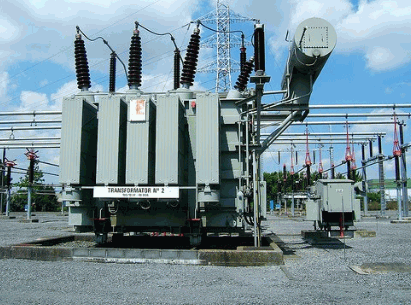
Transformers can seem a bit like magical devices in the world of electricity. They help us change the voltage of electricity, making it suitable for different tasks. Two common types of transformers are step-up transformers and step-down transformers. They are like opposites when it comes to their main job – changing voltage.
Think of a step-up transformer as a "Voltage Booster." Their job is to increase the voltage of electricity. They do this by having more turns in their secondary coil than in their primary coil. Here's how they work:
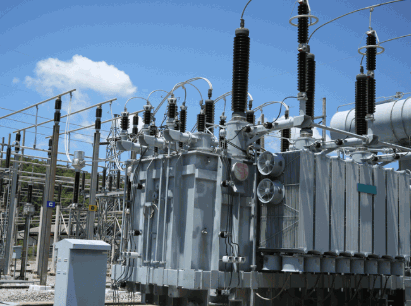
On the other hand, a step-down transformer converts high voltage to a lower level. This is how they work:
In a nutshell, a step-up transformer increases voltage for long-distance travel and various applications, while step-down transformers reduce voltage to make electricity safe for your home and gadgets. Both types of transformers are essential to keep electricity flowing smoothly and safely in our everyday lives.
Uncover more: What Is A Step-Down Transformer?
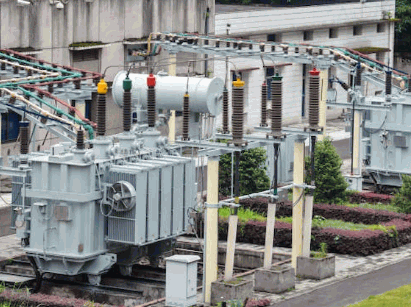
Understanding the inner workings of a step-up transformer is crucial to appreciate its significance. Here's a simplified explanation of how it operates:
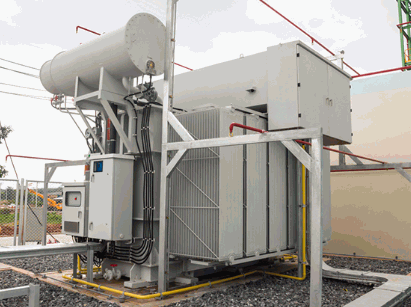
When we talk about step-up transformers, we often mention primary and secondary windings. These are like the building blocks of the transformer, and they play crucial roles in making it work: transformers adjust the voltage in direct relation to the ratios of the primary to secondary wire turns.
Let's break it down in an easy-to-understand way.
Think of the primary winding as the "starter" or the "source" of the electricity. It's where we put in the electrical energy that we want to transform. Here's how it works:
Now, let's talk about the secondary winding. It's like the "output" or the "destination" of the electricity. This is where the transformed electricity comes out. Here's how it works:
In a step-up transformer, the primary winding is the low-voltage winding, and the secondary winding is where we get the electricity at a higher voltage. The difference in the number of turns in these windings is what allows the transformer to boost the voltage. It's like converting a small stream into a powerful river, and it's all thanks to the primary and secondary windings working together.
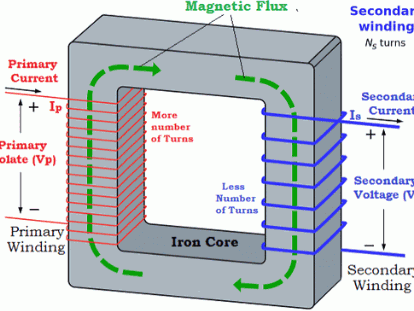
The transformer core is a critical part at the heart of a transformer, typically made of materials like iron with thick insulated copper wire. Both primary and secondary windings are wrapped around the same core material for the most efficient magnetic coupling.
Magnetic Flux is an invisible energy flow through the core, created when electricity flows through the primary winding. The core ensures efficient energy transfer from the primary winding to the secondary winding, preventing energy loss and boosting power transfer efficiency by acting as a tunnel for the magnetic flux.
It's important to note that - aside from the number of turns - the parameters affecting inductance for the coils are equal.
H and X terminals play pivotal roles in transformer setups, devised by the electric power industry to dispel any ambiguity. However, there's often a problem with transformer construction labels: transformers are frequently made so that you can't always tell which wires go where.
Let's examine this to see what's going on...
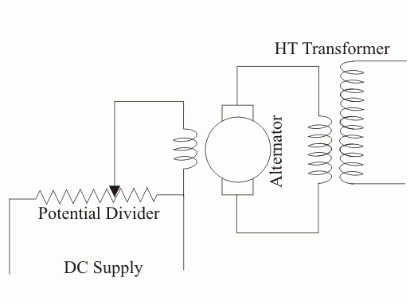
Imagine the H terminal as the gateway to which the primary winding (the input side) of the transformer connects. It functions as the "threshold" for the electricity streaming in from high-voltage sources, such as the formidable power grid. As electricity enters the H terminal, it journeys through the primary winding, creating a magnetic field within the transformer's heart.
The X terminal resembles the "nexus" or central hub of the transformer. It remains impartial, not directly tethered to either the primary or secondary winding. Nevertheless, it often serves as a reference point for the electrical circuit, managing the flow of electrons. Additionally, the X terminal may assume a pivotal role in grounding, ensuring electrical safety, and fortifying protection against potential electrical fluctuations.
So, the H terminal delivers high voltage into the transformer, while the X terminal stands as a grounding point, occasionally shouldering more specialised roles within the electrical network. These terminals are fundamental for the seamless operation of the transformer, securing the dependability and safety of electrical connections.
Understanding voltage ratios can be a challenge, especially if you're not accustomed to these electrical intricacies. However, let's unwrap this concept by looking at it from a different angle.
Picture a step-down transformer as a device that fine-tunes the intensity of an electrical force – what we measure as voltage. It's like a two-sided entity, with one side featuring high voltage (the primary) and the other side boasting lower voltage (the secondary).
Now, the voltage ratio in a step-down transformer can be likened to a well-crafted recipe that instructs us on how to transform this robust river into a suitable stream. If the recipe specifies 10:1, it signifies that for every 10 units of force on the primary side, the transformer reduces it to a single unit on the secondary side.
In simple terms, a step-down transformer acts as a voltage adjuster, taking a potent electrical force and tempering it. The voltage ratio* between primary and secondary voltages serves as the meticulous recipe guiding this adjustment, guaranteeing that the electricity supplied is a perfect match for our devices to operate safely and efficiently.
*Voltage ratios are equal to coil turn ratios
Step-up transformers offer a range of advantages in different contexts. Here are some of the key benefits:
In long-distance power transmission, electrical energy experiences significant losses as it travels through the power lines. Step-up transformers help mitigate these losses by increasing voltage, which, according to the power formula (P = VI), reduces the current required to transmit the same amount of power. Lower current means reduced resistive losses in the lines, leading to more efficient energy transmission.
Step-up transformers are integral to voltage regulation in power distribution networks. By adjusting the voltage levels at different stages of power distribution, they ensure that consumers receive electricity at the desired voltage, preventing overloads and fluctuations.
Excessive voltage can damage sensitive equipment, so these transformers are handy for avoiding this problem.
Step-up transformers find applications in various industries, such as:
Take a look: Renewable Energy Integration
By using step-up transformers to increase voltage in electric fences, they become more effective in deterring intruders, while still being safe for animals.
Step-up transformers can also be used for voltage conversion in international power grids. By adjusting the voltage, they make it possible to interconnect grids with different voltage standards.
The ability of step-up transformers to increase voltage without increasing power loss is a major advantage in energy-efficient power distribution.
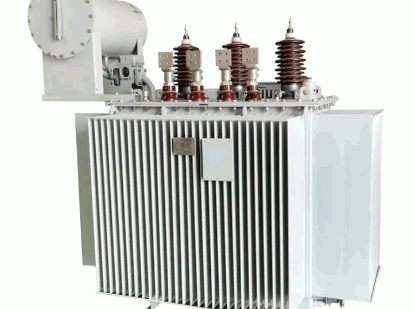
Step-up transformers are employed in numerous sectors, each benefiting from their voltage-boosting capabilities. Let's explore some of these applications.
In the electrical power generation and distribution industry, step-up transformers are indispensable. Power plants generate electricity at lower voltages, but for efficient long-distance transmission, the voltage needs to be significantly increased. This is where step-up transformers come into play.
Wind turbines generate electricity at relatively low voltages. To feed this energy into the grid, step-up transformers are used to increase the voltage to a level suitable for transmission.
Solar panels produce direct current (DC) electricity, which typically requires conversion to alternating current (AC) at a higher voltage before being distributed. Step-up transformers facilitate this conversion process.
Electric trains require high-voltage electricity to power their locomotives. Step-up transformers are essential in raising the voltage to levels suitable for train operation.
In the oil and gas sector, step-up transformers help control the voltage required for various drilling and refining processes, ensuring the safety and efficiency of equipment.
Choosing the right step-up transformer for your specific application is crucial to ensure optimal performance and safety. Here are some key considerations when making your selection:
Determine the voltage increase needed for your application. Different step-up transformers offer various voltage ratios, so select one that matches your requirements.
Consider the power rating of the transformer. Ensure it can handle the power demands of your application without overheating or experiencing performance issues.
Look for transformers that are designed for high efficiency. More efficient transformers will reduce energy losses and operating costs.
Consider the physical dimensions and mounting options of the transformer to ensure it fits within your installation space.
Factor in the environmental conditions the transformer will operate in. Some transformers are designed for outdoor use and can withstand extreme temperatures and weather conditions.
Ensure that the transformer complies with relevant safety and performance standards, such as those set by national and international regulatory bodies.
Safety should always be a top priority when working with step-up transformers. Here are some essential safety considerations:
Always be aware of the high voltage levels associated with step-up transformers. Take appropriate precautions to avoid electrical shock or injury.
Installation, maintenance, and repair of step-up transformers should be performed by qualified and trained personnel (Like Powervolt Team) to ensure safety and compliance with regulations.
Ensure that the transformer and all associated equipment are properly grounded to prevent electrical faults and reduce the risk of electric shock.
Use appropriate personal protective equipment (PPE) when working with or around step-up transformers, including insulating gloves and safety glasses.
Proper maintenance and care are essential to prolong the life and maintain the performance of your step-up transformer. Here are some maintenance tips:
Regular inspections are crucial for the continued reliable operation of your step-up transformer. Here's what you should look for during inspections:
Keeping your step-up transformer and its surroundings clean is essential for its proper operation. Here's what you should do:
Lubrication is essential if your step-up transformer has moving parts, such as cooling fans or mechanical switches. Here's what you need to know:
If your step-up transformer is equipped with a cooling system, proper maintenance of this system is vital. Here's what you should consider:
Maintaining records and documentation is essential for tracking the history of your step-up transformer and ensuring its continued reliability. Here's what you should document:
Having a comprehensive set of records allows you to track the transformer's history, identify patterns, and plan maintenance activities more effectively.
While some maintenance tasks can be performed by trained personnel, certain complex maintenance or repairs are best left to professionals. Here's when you should seek professional servicing:
Professional servicing ensures that your step-up transformer continues to operate safely and efficiently, and it can extend the transformer's lifespan.
To provide further clarity on step-up transformers, we've compiled a list of frequently asked questions and their answers:
Q: What is the primary function of a step-up transformer?
A: The primary function of a step-up transformer is to increase the voltage of the electrical input.
Q: How does a step-up transformer achieve voltage increase?
A: Step-up transformers achieve voltage increase through an unequal number of turns in the primary and secondary coils.
Q: Why is voltage increase important in power transmission?
A: Voltage increase is essential for efficient power transmission, as it reduces the current required, which, in turn, minimizes energy losses in transmission lines.
Q: Are step-up transformers only used in power distribution?
A: No, step-up transformers are used in various applications, including wind and solar energy, railways, and the oil and gas industry.
Q: How can I select the right step-up transformer for my needs?
A: Consider factors such as voltage requirements, power rating, efficiency, safety features, size, environmental conditions, and regulatory compliance.
Q: What safety precautions should I take when working with step-up transformers?
A: Always be aware of high voltage levels, use qualified personnel for installation and maintenance, ensure proper grounding, and use appropriate PPE.
Q: How often should step-up transformers be inspected and maintained?
A: Regular inspections are recommended, and maintenance should be performed as needed. Specific intervals may vary based on the application and manufacturer's guidelines.
Q: Can step-up transformers be used in international power grid connections?
A: Yes, step-up transformers are used to adjust voltage levels when interconnecting power grids with different standards.
Q: What are the common signs of transformer wear or damage?
A: Signs may include overheating, unusual noises, and visible damage to the transformer casing or components.
Q: Can I perform maintenance on a step-up transformer myself, or should I hire a professional?
A: Simple tasks like routine inspections and cleaning can be performed by trained personnel. However, complex maintenance or repairs should be conducted by professionals or in consultation with the manufacturer.
From what we've seen, it's clear that step-up transformers are indispensable in modern electrical systems. They play a critical role in voltage increase, enabling efficient power transmission, voltage regulation, and a wide range of applications across various industries. By understanding their operation, benefits, and safety considerations, we can harness the power of step-up transformers to create a better and more electrified future.
At Powervolt Team, we remain committed to providing you with the latest insights and information on electrical devices and technologies. If you have any further questions or require assistance in selecting the right step-up transformer for your needs, please don't hesitate to contact us.